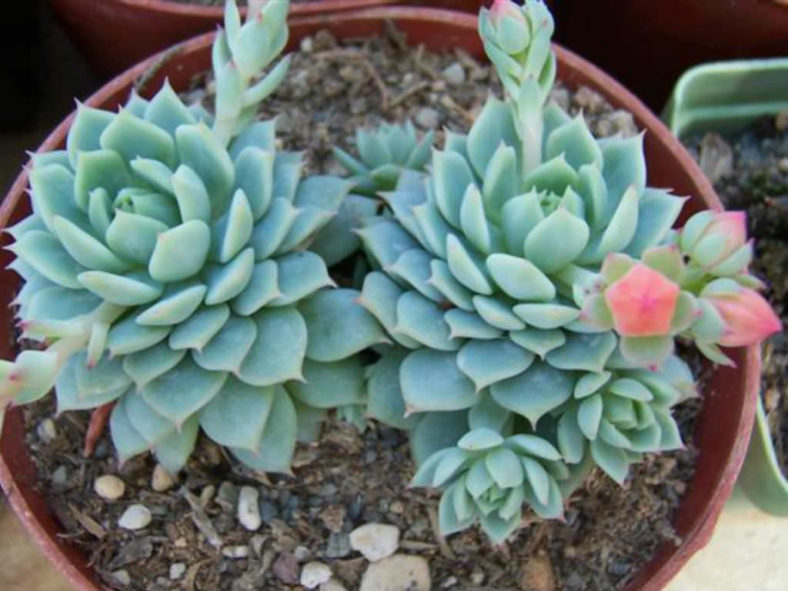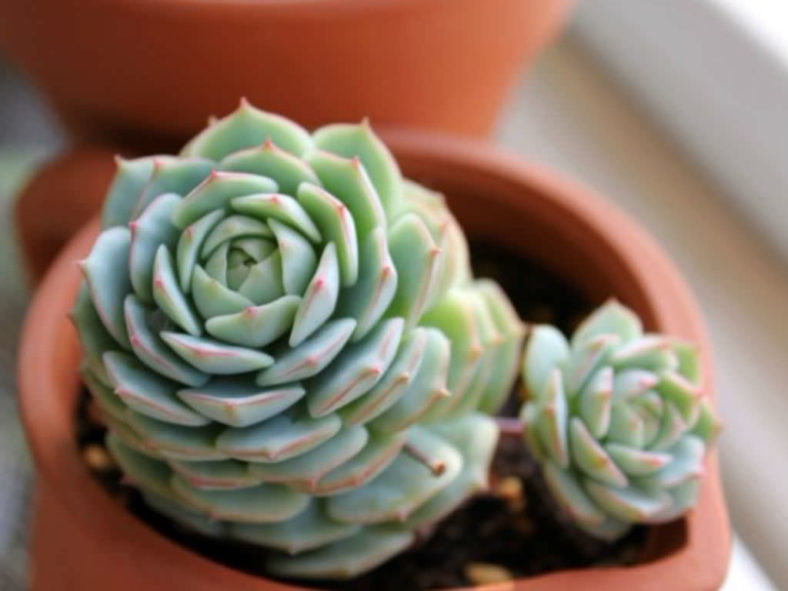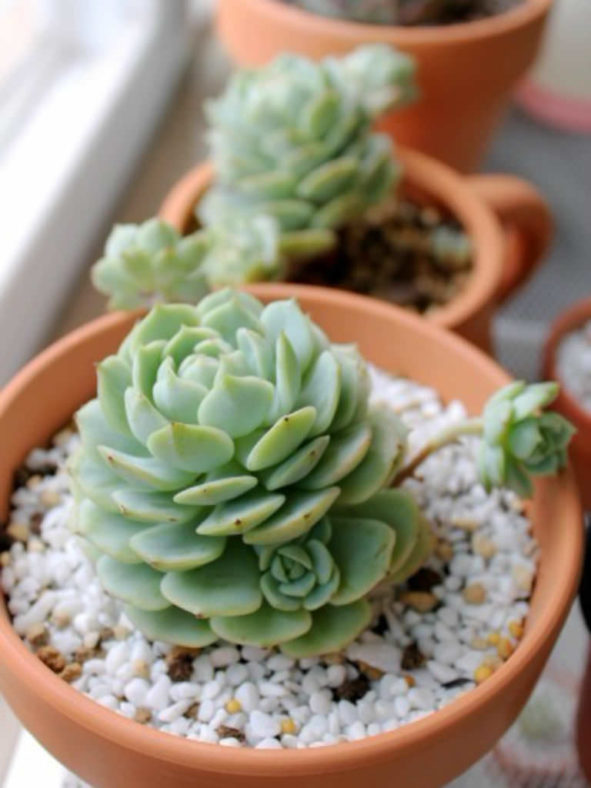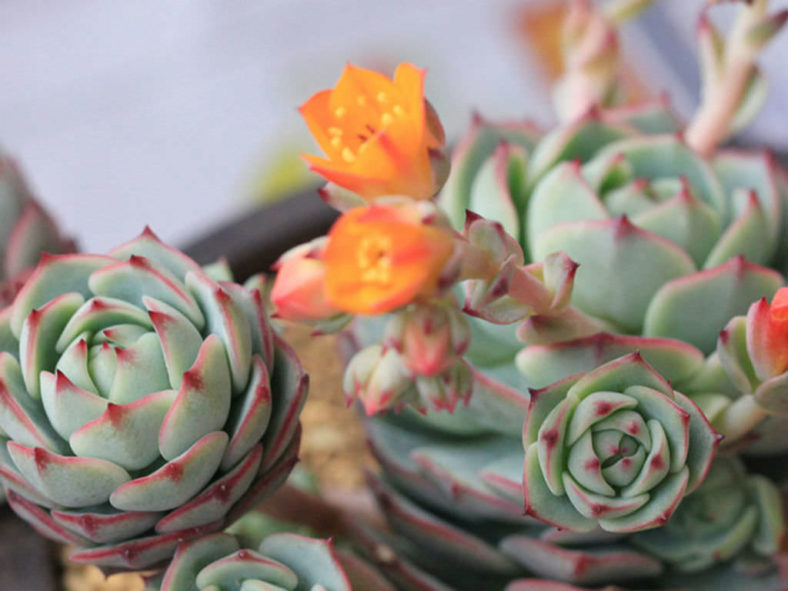Scientific Name
Echeveria 'Captain Hay'
Synonym(s)
Echeveria derenbergii 'Captain Hay'
Scientific Classification
Family: Crassulaceae
Subfamily: Sempervivoideae
Tribe: Sedeae
Genus: Echeveria
Origin
Echeveria 'Captain Hay' is a hybrid that results from a cross between Echeveria derenbergii and Echeveria prolifica.
Description
Echeveria 'Captain Hay' is a small succulent plant with densely clustered rosettes of triangular, grey-blue leaves edged in red. It can grow up to 5 inches (12.5 cm) tall and offsets freely, forming dense clumps over time. The rosettes can reach a diameter of 3.2 inches (8 cm).
The flowers are vivid yellow and appear in spring.
Echeveria 'Captain Hay' is often confused with one of its parents, Echeveria derenbergii. They have very similar rosettes and flowers, but Echeveria 'Captain Hay' offsets prolifically.

How to Grow and Care for Echeveria 'Captain Hay'
Hardiness: USDA hardiness zones 9b to 11b: from 25°F (-3.9°C) to 50°F (10°C).
Most common Echeveria species are not complicated succulents to grow, provided you follow a few basic rules. First, be careful never to let water sit in the rosette, as it can cause rot or fungal diseases that will kill the plant. Additionally, remove dead leaves from the bottom of the plant as it grows. These dead leaves provide a haven for pests, and Echeverias are susceptible to mealybugs. Finally, as with all succulents, maintaining careful watering habits and providing ample light will help ensure success.
Repot as needed, preferably during the warm season. To repot a succulent, ensure the soil is dry before repotting, then gently remove the pot. Knock away the old soil from the roots, removing any rotted or dead roots. Treat any cuts with a fungicide.
Most Echeverias can be easily propagated from leaf cuttings, although a few are better propagated from seeds or stem cuttings. To propagate a leaf cutting, place the individual leaf in potting soil for succulents and cover the dish until the new plant sprouts.
See more at How to Grow and Care for Echeveria.
Links
- Back to genus Echeveria
- Succupedia: Browse succulents by Scientific Name, Common Name, Genus, Family, USDA Hardiness Zone, Origin, or cacti by Genus
Photo Gallery
Click on a photo to see a larger version.


